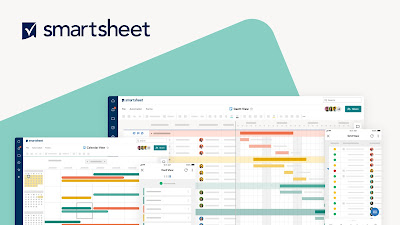Creating a project schedule and accurately estimating
activity durations are crucial components of successful project management. A
well-structured project schedule not only outlines tasks, deliverables, and
milestones but also serves as a roadmap for resource allocation and progress
tracking (ActiveCollab, n.d.). However, the process of estimating how long each
activity will take can be fraught with challenges, including task complexity
and cognitive biases that may lead to underestimations (FasterCapital, n.d.).
Dr. Stolovitch emphasizes that every activity in a project
consumes valuable time, which is often a limited resource (Walden, n.d.). This
means it’s essential to evaluate each task and categorize it as high, medium,
or low priority. Once you've done that, take a moment to review the timeline
and analyze the task list. Identify the start date for each task, note the
activities associated with it, and engage in discussions with your team
members. Flexibility is key here; be prepared to communicate any changes to
those affected by them. Make sure to share important milestones with everyone
involved, while also addressing specific task-related items with the relevant
individuals. To eliminate any confusion, consider having one-on-one
conversations to clarify expectations and responsibilities.
Two valuable resources that can aid in planning an
instructional design (ID) project’s schedule, budget, and task breakdown are
Smartsheet and Project Manager.
Smartsheet: Project Schedule Templates
Image Credit: https://www.smartsheet.com/platform
Description: Smartsheet offers a variety of free, customizable project schedule templates, including Gantt charts and task schedules. These templates can be downloaded in formats such as Excel, Google Sheets, and PowerPoint. The templates allow users to track delivery dates, manage resources, and monitor project risks.
Evaluation: The templates are user-friendly and cater to
different project management needs. For example, the Master Project Schedule
Template enables users to input task names, durations, and assignees,
automatically generating an overview timeline. This feature is particularly
useful for visualizing the entire project at a glance.
Most Helpful Feature: The ability to customize templates
according to specific project needs stands out. I would use the Project Task
Schedule Template to break down individual tasks, set priorities, and track
costs. This would help ensure that each component of the ID project is
accounted for and managed effectively (Smartsheet, n.d.).
ProjectManager: Resource Scheduling Tools
Description: ProjectManager provides insights into resource
scheduling in project management. It includes a free Resource Planning Template
for Excel and discusses various tools like Gantt charts and workload management
charts that help in aligning resource availability with project schedules.
Evaluation: The site emphasizes the importance of optimizing
resource schedules to ensure that projects stay on track. It offers practical
tips for effective scheduling, such as using a Work Breakdown Structure (WBS)
to identify all necessary tasks before scheduling resources.
Most Helpful Feature: The Gantt Chart Tool allows for visual
representation of tasks along a timeline while assigning them to team members.
I would leverage this tool to create a visual schedule for the ID project,
making it easier to communicate timelines and dependencies among team members (ProjectManager,
2024).
Conclusion
Effectively managing a project schedule and accurately
estimating activity durations are critical skills that can significantly
influence the success of any project. By prioritizing tasks, maintaining open
communication with your team, and being adaptable to changes, you can navigate
the complexities of project management with greater ease. Remember, each step
you take in planning and execution not only keeps your project on track but
also fosters a collaborative environment where everyone feels informed and
engaged. Embrace these practices, and you’ll be well on your way to achieving
your project goals.
References
ActiveCollab. (n.d.). Project schedule - Definition and main
components. Retrieved September 29, 2024, from https://activecollab.com/blog/project-management/project-schedule
FasterCapital. (n.d.). Estimating activity durations and
resource requirements. Retrieved from https://fastercapital.com/topics/estimating-activity-durations-and-resource-requirements.html
ProjectManager. (2024). Resource Scheduling in Project
Management. Retrieved from
https://www.projectmanager.com/blog/better-resource-scheduling
Smartsheet. (n.d.). Free Project Schedule Templates. Retrieved from https://www.smartsheet.com/content/project-schedule-templates
Walden University, LLC. (Executive Producer). (n.d.).
Creating a project schedule [Video file]. Retrieved from https://waldenu.instructure.com
.png)


.png)




.png)